On View
Who Can Tell a Forest’s Secrets? Janet Cardiff on What It Takes to Create a Truly Epic Work of Sound Art
One work alone requires contributions from nearly 50 people.
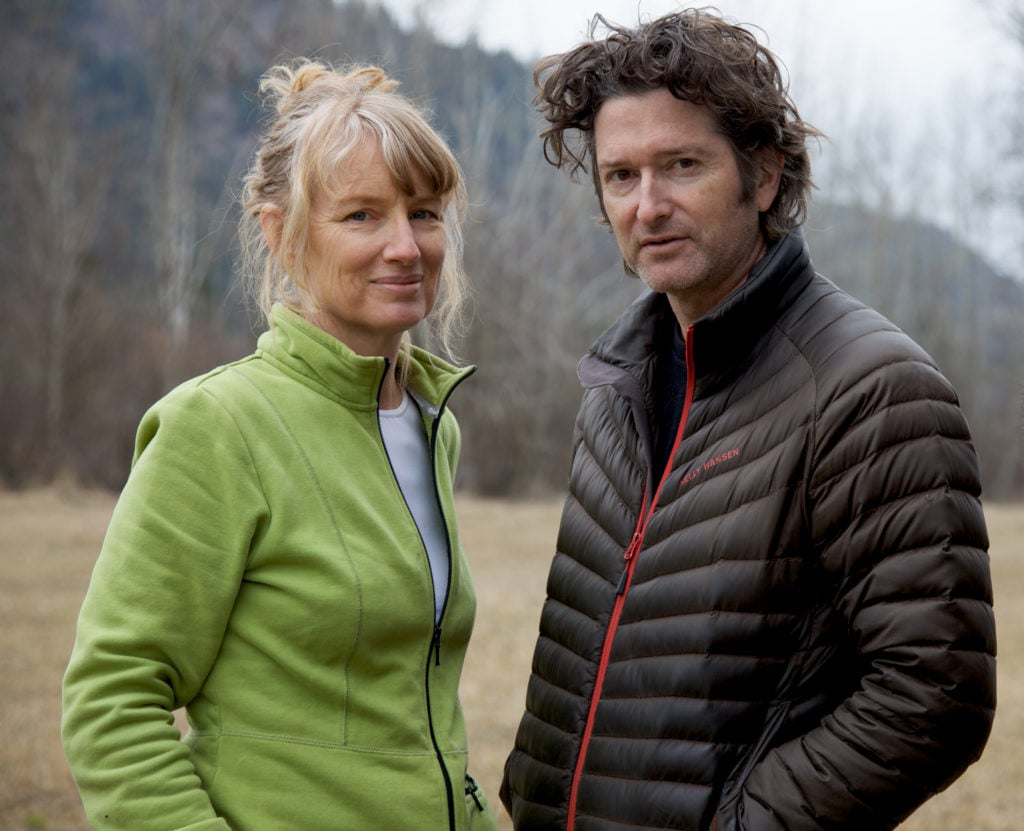
One work alone requires contributions from nearly 50 people.

Julia Halperin

Think the life of a sound artist is all long, solitary nights spent wearing headphones and staring into a computer screen? Think again.
For Canadian artists Janet Cardiff and George Bures Miller, the process of creating a 28-minute sound installation is as collaborative and ambitious as making a feature film. To produce FOREST (for a thousand years…) (2012), which was acquired by the Glenstone Museum in Maryland this summer, the longtime artistic collaborators traveled across Europe, the US, and Canada collecting sounds. The husband-and-wife team recorded everything from Estonian choir music to their own child’s growls.
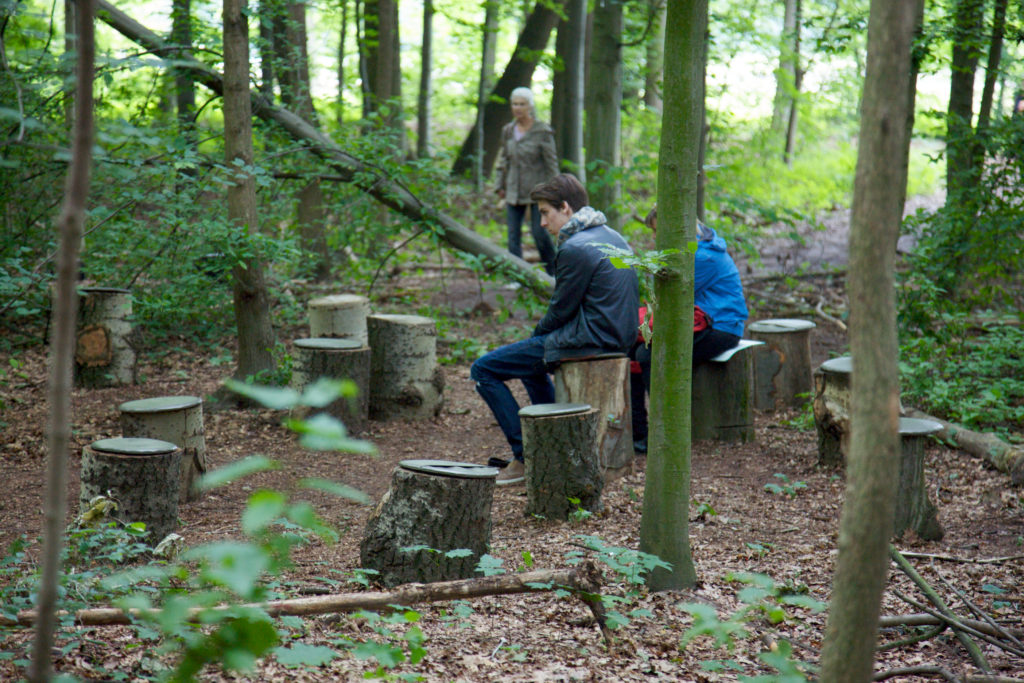
Janet Cardiff and George Bures Miller’s FOREST (for a thousand years…) (2012). ©Janet Cardiff and George Bures Miller. Courtesy of the artists and Luhring Augustine, New York. Glenstone Museum, Potomac Maryland. Photo: George Bures Miller.
The final installation, originally commissioned for documenta 13 in Kassel, is making its North American debut at Glenstone, the private museum founded by collectors Mitchell and Emily Rales on a 200-acre former foxhunting estate.
The experience is uncanny. You enter a clearing populated by tree stumps, sit down, and listen to the sounds of rustling trees and bird calls. An airplane zooms overhead. Someone laughs. It is nearly impossible to determine which sounds are coming from a recording and which sounds are live. Then, machine guns begin to fire. An explosion detonates. It feels as if the forest is replaying the many horrors it has witnessed over the centuries.
For this edition of “Origin Story,” which explores the backstories of individual works of art, we spoke to Janet Cardiff about the painstaking process of creating the work, why explosions are so hard to record, and how the installation resonates differently in the US.
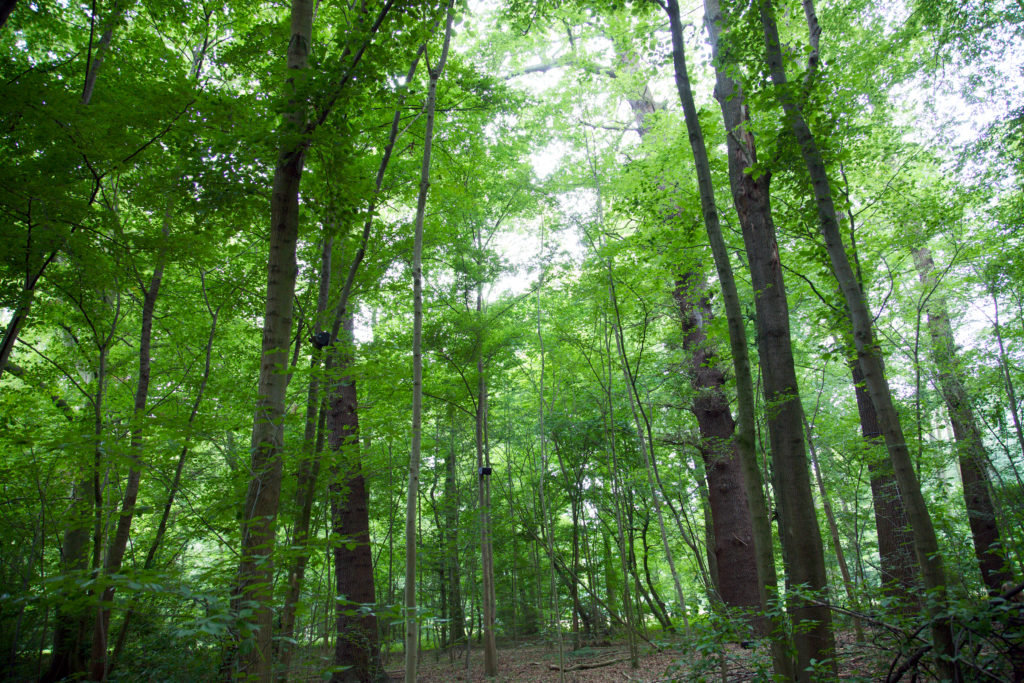
Janet Cardiff and George Bures Miller’s FOREST (for a thousand years…) (2012). ©Janet Cardiff and George Bures Miller. Courtesy of the artists and Luhring Augustine, New York. Glenstone Museum, Potomac Maryland. Photo: George Bures Miller.
How did you develop the idea for FOREST (for a thousand years…)?
It came about from being in Kassel. We’d always wanted to make a piece that didn’t have any direct narrative to it, or a narrative voice. We’d tried doing that before, in The Murder of Crows, but in a big gallery space we found there wasn’t the resonance in sounds alone to hold the train of thought for 30 minutes. The forest in Kassel gave so much content and atmosphere to the work that the forest itself became a part of the narrative that ties the sounds together.
Once you have a site, what comes next? How do you start assembling the sound?
We have a place on an island off the west coast of Canada that has a forest. We said, “Oh, we’ll live there for three months to produce the piece.” Our daughter went to the local school and we just started recording. We got local people to do some of the sound effects for us—acting as if they were sword fighting, dragging things through the forest, singing, hitting trees, and so on, and we got up early to record the birds and rain. We also built a hut in the forest to edit right on site so we would know which sounds played back would have resonance in a forest setting.
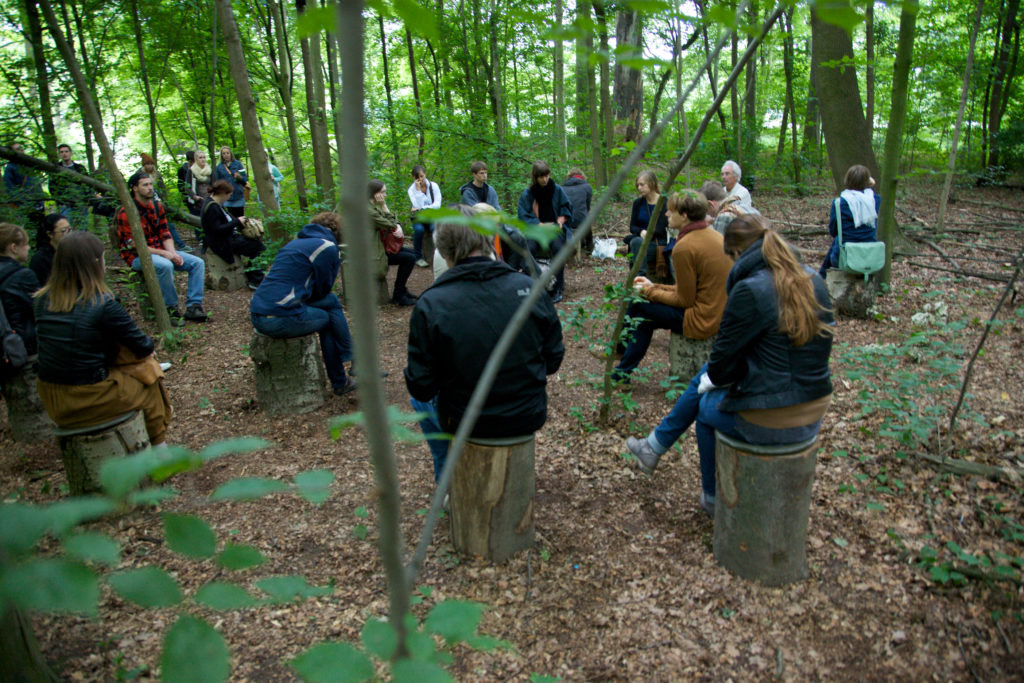
Janet Cardiff and George Bures Miller’s FOREST (for a thousand years…) (2012). ©Janet Cardiff and George Bures Miller. Courtesy of the artists and Luhring Augustine, New York. Glenstone Museum, Potomac, Maryland. Photo: George Bures Miller.
It is at times very difficult to distinguish between real sounds in the forest and the recording. How do you achieve that?
In order to sound really authentic, sound needs to be recorded in a similar environment to the one in which it will be heard. Some of the subtlest sounds are actually the most effective. For example, if someone is breaking twigs as they walk in the recording, and you listen to it in a forest where there are twigs, it really feels like there is someone else there with you. It’s freaky. It’s hard to imagine how important the particular forest is to the experience.
This work has one of the best lists of credits I’ve ever seen—you have a horse wrangler, someone credited for tree felling, and multiple people responsible for explosions. All told, almost 50 people contributed sound to the piece.
It’s like a film—you’re collaging together all this sound to create images. Hundreds of sounds. You’re working just with aural recordings but you want to create a mental picture for someone. Usually we’re collecting for a project script, but often if we hear a good sound we’ll go get a recorder—rain storms, wind in the trees, frog sounds—and then the content of the script changes. You never know when you’ll be able to use some sounds too… so they go into our sound archive. For the horse sounds, we went to George’s brother, who has eight horses. He had them running past at breakneck speed—it was quite scary.

Janet Cardiff and George Bures Miller’s FOREST (for a thousand years…) (2012). ©Janet Cardiff and George Bures Miller. Courtesy of the artists and Luhring Augustine, New York. Glenstone Museum, Potomac, Maryland. Photo: George Bures Miller.
Experiencing the piece, it feels a bit like you are somehow moving through the history of war. How did you manage that?
We had this idea of sound passing through the years. George went to a Napoleonic war re-enactment in France where they were using muskets. Then we got recordings of different bombers from different war times; some we bought as ambisonic sound files [made with a surround-sound recording technique] online. For the explosions, we contacted two explosion companies—people who generally work in the construction industry, moving mountains and roads, but for money, they’ll do anything… like blowing up an old refrigerator! We soon learned that recording explosions is very difficult because it’s so quick and so loud—we had to mix them together in the final piece to make it sound like an actual explosion. Other shooting sounds are actually from New Year’s Eve in Berlin, which sounds like a war zone. It was a crazy night… we were shooting firecrackers off the balcony at another balcony.
The work has been shown in several places since it debuted at documenta 13. How do you think it will resonate differently at Glenstone?
You don’t have to give much sound in Germany without listeners thinking about the wars. I think it will have a different resonance in America because of a different experience with nature but also because of America’s experience with terrorism. There is one point where you hear this cart going through, and we made it sound like a primitive horse-drawn cart. Americans might associate that sound more with pioneer days. We bring our own baggage as a viewer. It’s amazing how works change based on the setting and the time.
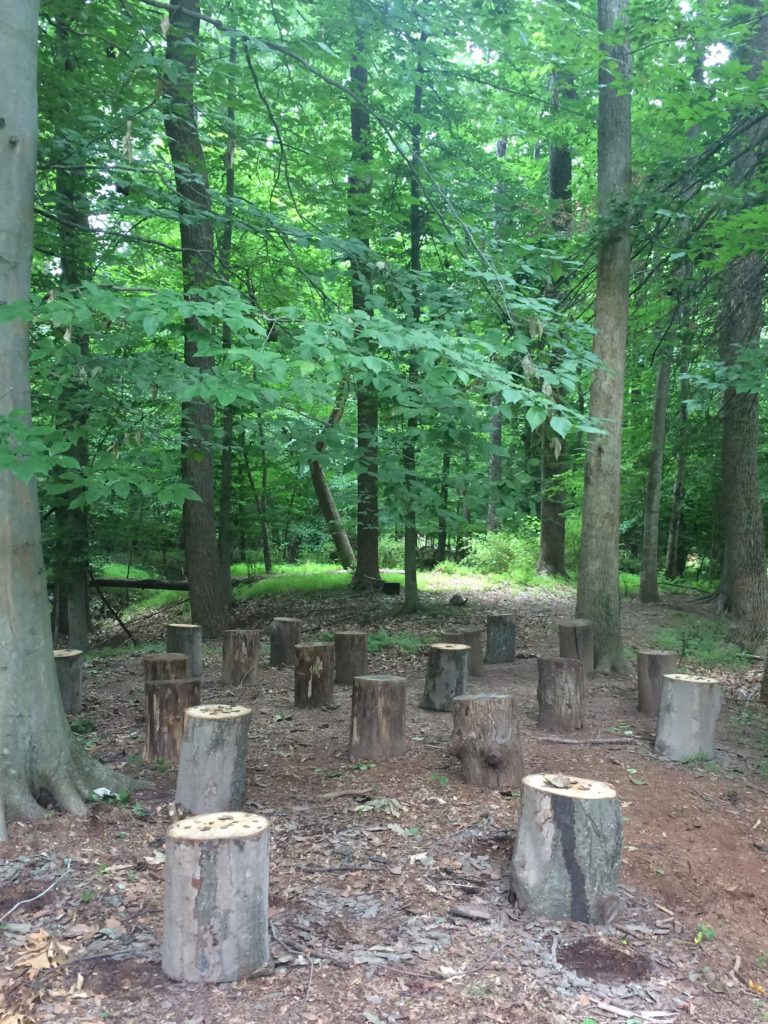
Janet Cardiff and George Bures Miller’s FOREST (for a thousand years…) (2012) during installation at Glenstone in May 2017. ©Janet Cardiff and George Bures Miller. Courtesy of the artists and Luhring Augustine, New York. Glenstone Museum, Potomac, Maryland. Photo: Glenstone Museum.
How did you settle on a specific site at Glenstone?
Before we sold the piece to them, I went to make sure they had a location that would work. It has to be a forest that is nice enough to look at, with some older trees and thick enough growth, and it can’t be next to a roadway or underneath a flight path. You have to bring a surveyor and mark all the trees in the area, and then George puts that information into a computer program that maps where the speakers should go. We have to create a perfect sphere of sound, so you need subwoofers on the ground for the bass of the planes and some speakers higher up.
What is the installation process like?
We have tree climbers supervised by one of our assistants put the speakers up in the proper locations. Then our tonmeister, Titus, who we’ve worked with for 17 years, comes in to do the final mix. Tonmeisters are trained classical musicians and computer geeks. He tunes the piece to every individual forest. Some forests have different bass or treble responses according to how close the trees are and what kind of wood it is. If the birds sound too harsh in one particular forest, for example, he can adjust that track. This is the first collection to buy this work, and they plan to keep it on view for a long time, so we’ll probably check the tone every few years to see how the piece is adjusting.
“Origin Story” is a column in which we examine the backstory of an individual work of art.
FOREST (for a thousand years…) is on permanent view at the Glenstone Museum in Potomac, Maryland.